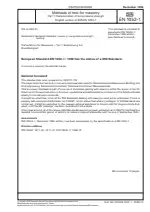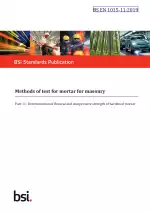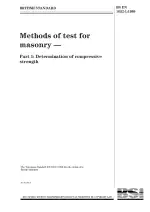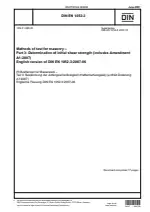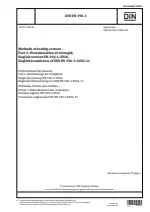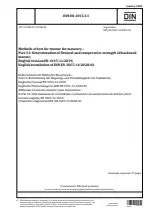Methods of Test for Masonry - Part 1: Determination of Compressive Strength
Also Known As:
The DIN EN 1052-1 standard is focused on providing a standardized method for determining the compressive strength of masonry. The document covers various aspects of the testing process, including specimen preparation, conditioning, and testing procedures.
Guidance is provided on the correct procedures for preparing the specimens, ensuring that they meet the specific requirements for the test. The document also outlines the necessary conditioning steps that should be taken prior to conducting the compressive strength test.
The standard provides guidance on the appropriate testing machine to be used, ensuring that the equipment meets the necessary specifications. It also specifies the method of test, which outlines the step-by-step instructions to be followed during the test, ensuring consistency and accuracy.
In addition, the document includes information on the method of calculation, which outlines the formula or algorithm to be used for determining the compressive strength of the masonry. This helps to ensure that results can be accurately calculated and compared.
Finally, the standard provides guidelines on the contents of the test report, including the required information and documentation that should be included. This ensures that the test results can be properly documented and easily understood by others who may need to refer to them.
| Descriptors | Bricks, Components, Compression testing, Compressive strength, Construction, Construction materials, Definitions, Elastic properties (fluids), Masonry, Masonry walls, Material testing machines, Modulus of elasticity, Mortars, Test reports, Testing, Walls |
| ICS Codes | 91.080.30 - Masonry |
| Language(s) | English |
| File Size | 3.4 MB |

